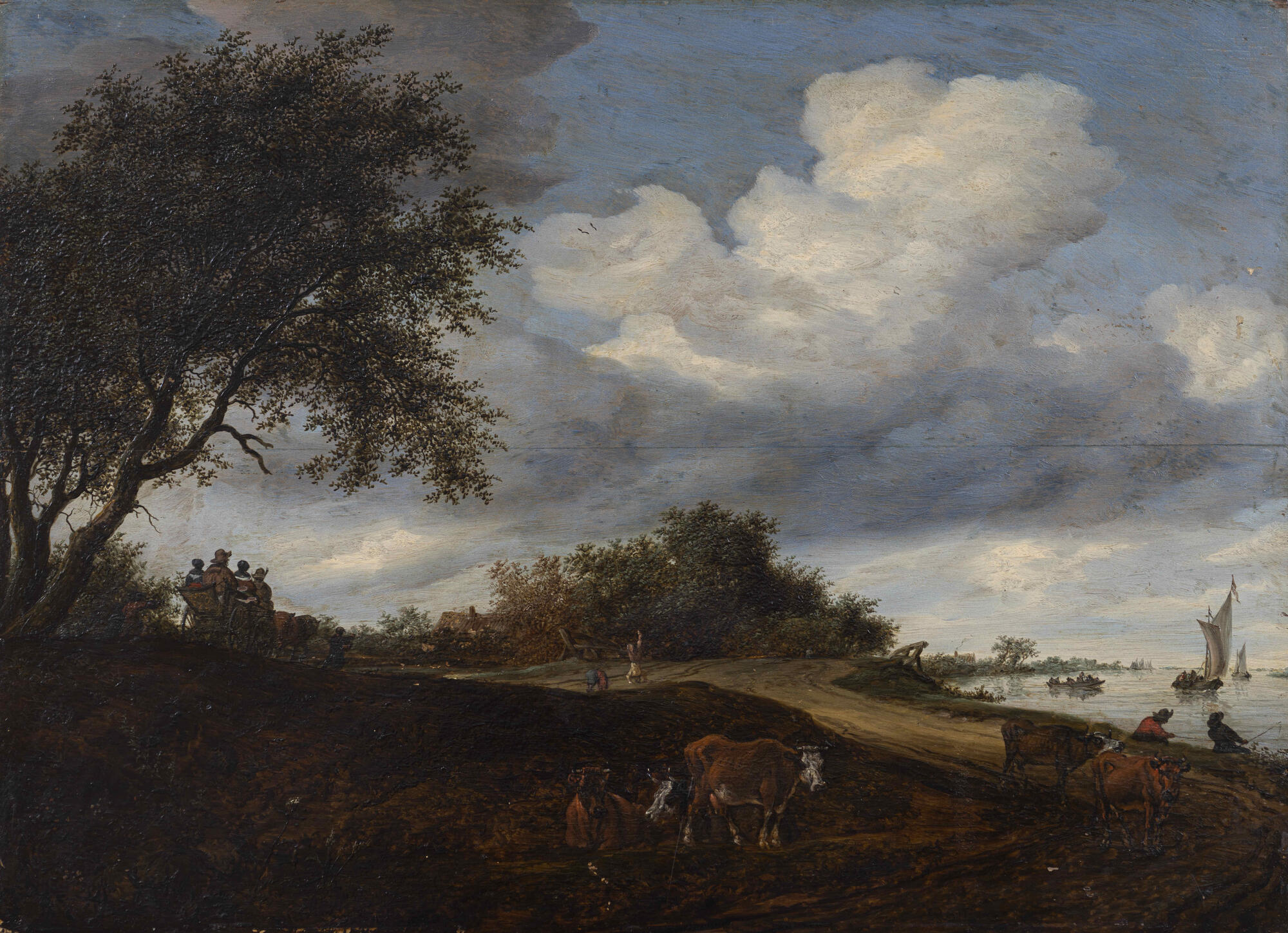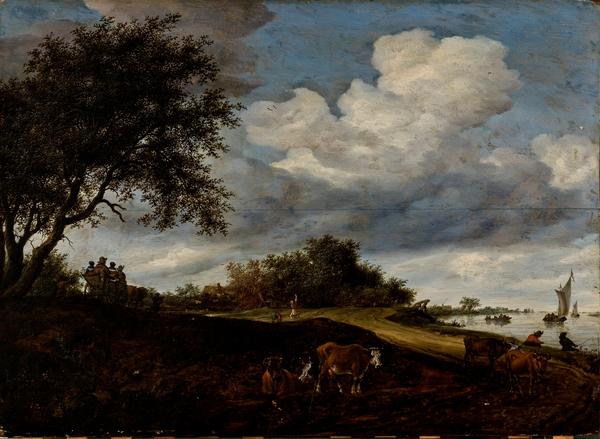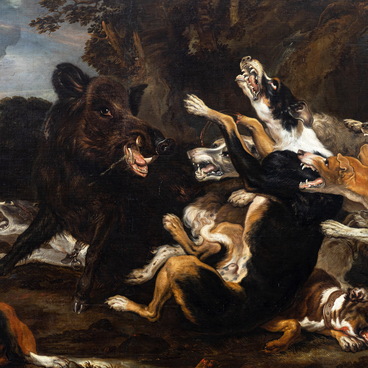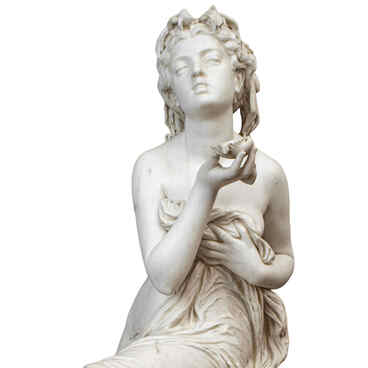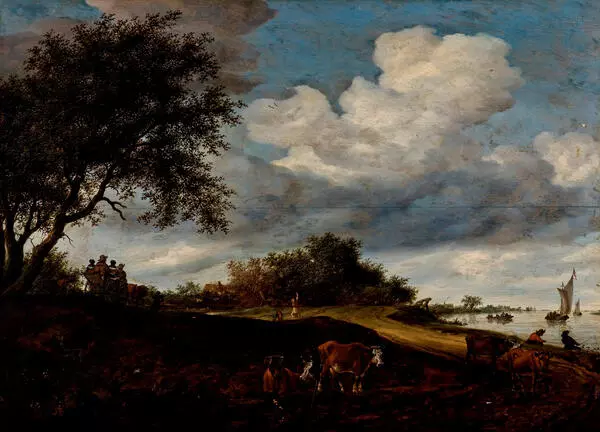Salomon van Ruysdal is a representative of a dynasty of Dutch landscape artists who made the nature of their native country famous.
Salomon was born at the beginning of the 17th century near Amsterdam. He was influenced by Esaias van de Velde, a representative of the Harlem school of painting, who introduced a new emotional aspect to the landscape genre.
Van Ruysdal traveled extensively in his native land, as evidenced by his works: he depicts various Dutch villages, hamlets, towns and forest landscapes. The first dated works by the artist go back to 1627. These are mostly views of sandy hills, roads, and river landscapes. But his best works were painted in the middle of the century, by which time he had already developed his own particular monochrome style. The small paintings, executed on board and canvas, depicted the dunes, rivers, and coasts of Holland in an almost one-color scheme. Gray, brown and dark green most accurately reflected the colors of local nature in Ruysdal’s works.
Dutch landscapes often featured staffage — figures of people engaged in daily activities and animals designed to emphasize the scale of the landscape scene and enliven it. Van Ruysdal often incorporated peasants into the landscape, usually in groups, as was required for scenes of village life. He also painted winter landscapes.
Van Ruysdal’s manner was particularly conspicuous in the way the crowns of trees were depicted on the canvas. Each leaf was meticulously painted in short strokes, most of them not attached to the branches. This is also noticeable in the “Landscape with Figures and a Herd” displayed in the exhibition.
The gray, moisture-laden sky is the hallmark of Dutch landscapes. The dark brown foreground is followed by a sunny middle ground with green trees and a rolling road. The background is the light blue sky and the mirror-like water surface.
In spite of the calm subject — a warm day, a leisurely group of people in a cart, children in the sun, quiet water surface, boats, peacefully grazing cows, fishermen with fishing rods — the composition of the painting is dynamic. The viewer’s gaze follows the winding road, then sharply goes upwards among the clouds to the right.
In his late period, van Ruysdal began to work in the genre of “hunting” still lifes — he painted shot grouse and other game. His legacy is not extensive, but his paintings are housed in many European museums and private collections.
Salomon was born at the beginning of the 17th century near Amsterdam. He was influenced by Esaias van de Velde, a representative of the Harlem school of painting, who introduced a new emotional aspect to the landscape genre.
Van Ruysdal traveled extensively in his native land, as evidenced by his works: he depicts various Dutch villages, hamlets, towns and forest landscapes. The first dated works by the artist go back to 1627. These are mostly views of sandy hills, roads, and river landscapes. But his best works were painted in the middle of the century, by which time he had already developed his own particular monochrome style. The small paintings, executed on board and canvas, depicted the dunes, rivers, and coasts of Holland in an almost one-color scheme. Gray, brown and dark green most accurately reflected the colors of local nature in Ruysdal’s works.
Dutch landscapes often featured staffage — figures of people engaged in daily activities and animals designed to emphasize the scale of the landscape scene and enliven it. Van Ruysdal often incorporated peasants into the landscape, usually in groups, as was required for scenes of village life. He also painted winter landscapes.
Van Ruysdal’s manner was particularly conspicuous in the way the crowns of trees were depicted on the canvas. Each leaf was meticulously painted in short strokes, most of them not attached to the branches. This is also noticeable in the “Landscape with Figures and a Herd” displayed in the exhibition.
The gray, moisture-laden sky is the hallmark of Dutch landscapes. The dark brown foreground is followed by a sunny middle ground with green trees and a rolling road. The background is the light blue sky and the mirror-like water surface.
In spite of the calm subject — a warm day, a leisurely group of people in a cart, children in the sun, quiet water surface, boats, peacefully grazing cows, fishermen with fishing rods — the composition of the painting is dynamic. The viewer’s gaze follows the winding road, then sharply goes upwards among the clouds to the right.
In his late period, van Ruysdal began to work in the genre of “hunting” still lifes — he painted shot grouse and other game. His legacy is not extensive, but his paintings are housed in many European museums and private collections.
